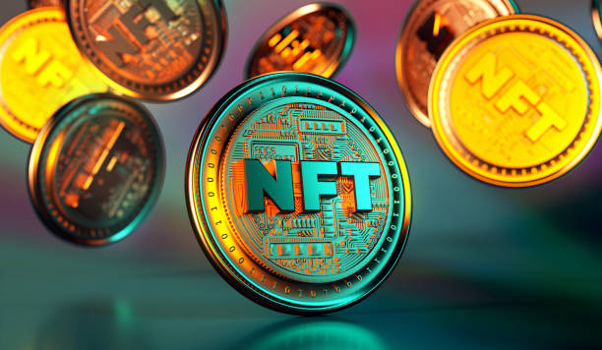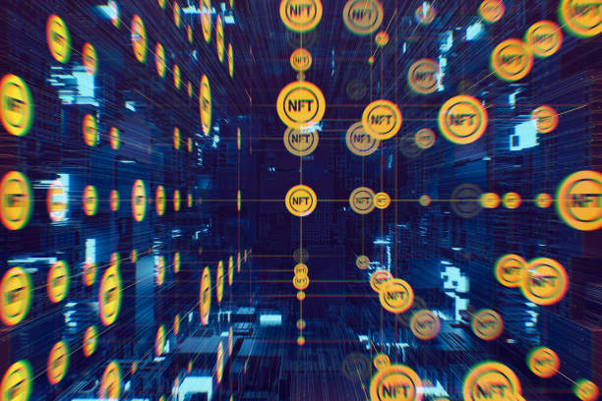The Technology Behind NFT Production
 (https://www.istockphoto.com/photo/nft-non-fungible-token-golden-coins-falling-trendy-cryptocurrencies-and-coins-on-the-gm1367699775-437880659?phrase=nfts)
(https://www.istockphoto.com/photo/nft-non-fungible-token-golden-coins-falling-trendy-cryptocurrencies-and-coins-on-the-gm1367699775-437880659?phrase=nfts)Over the last couple of years, Non-fungible tokens (NFTs) have become increasingly popular, with things like digital artwork selling for extremely high prices. NFTs come in different forms, including music albums and other digital collectables. That being said, it could be difficult to understand what an NFT is – below, we will go through how NFTs are made and the technology used to produce them.
What is an NFT?
A digital asset that utilizes blockchain technology and is stored on the internet is known as an NFT. Most people understand what cryptocurrencies are, specifically Bitcoin, which is the most popular crypto. It is widely accepted that people can trade cryptocurrencies such as Bitcoin for different coins; however, this is not possible with NFTs. Like cryptocurrencies, NFTs are also digital assets, but they differ in that they are unique and, therefore, cannot be traded in the same way cryptocurrencies are.
What is the process of making an NFT?
To make an NFT, you still use the same blockchain technology that cryptocurrencies utilize, making the entire process transparent and secure.
Creation
Making an NFT is categorized into three steps: creating, minting, and listing. The first step is the creation which involves making the NFT the tokenized digital asset. An NFT can be a wide range of things, from digital artwork to music albums, video game items, and sometimes a tweet. The NFT being created must be unique because this is how it becomes valuable in the market.
Minting
The next step in the process is the minting step – when the NFT becomes tokenized by being placed onto a platform using blockchain technology. The most commonly used blockchain platform utilized by those creating NFTs is Ethereum. However, platforms such as Binance Smart Chain and Flow are also gaining popularity.
To mint an NFT, the creator must use specialized software called a smart contract. A smart contract is self-executing, meaning it is written directly into the code upon the agreement between the seller and the buyer. It contains the rules and conditions of the transaction. These will include details such as who owns the NFT and any royalties the creator will receive from future sales. You must create a digital signature unique to the NFT to place it on the blockchain. This signature makes the NFT original, preventing it from being copied and re-sold.
Listing
The final step in making an NFT is listing – when the digital asset is put on the marketplace so it can be sold. Several different marketplaces for NFTs exist; for example, OpenSea is one of the biggest. SuperRare and Rarible are other examples of marketplaces where you can buy NFTs.
The person who made the NFT can create the initial buying price of the digital asset, and then bidders can compete for the NFT. After the NFT has been sold, the buyer now owns the digital asset and the information showing it is legitimate. Finally, the buyer can re-sell the NFT whenever they like or hold on to it in the hopes that it appreciates in value.
Technology that Powers NFTs
Several different technologies are used to create and store an NFT, including decentralized storage, smart contracts, and blockchain. Blockchain technology stores the NFT and records every transaction involving the NFT. As mentioned, of the many blockchain platforms available, the most widely used is Ethereum. Several other blockchain platforms are becoming increasingly popular for creating NFTs, such as Flow and Binance Smart Chain.
As we know, the blockchain stores the NFT, but the digital asset must also be stored. Because NFTs come in many forms, a digital asset's storage requirements vary considerably. IPFS (InterPlanetary File System) is one way to store digital assets. This enables the storage of decentralized data and is capable of retrieving it efficiently, which means things like video games and music albums can become NFTs.
The many advantages of using IPFS make it more favorable to older methods such as cloud storage. Cloud storage costs more money, and data is harder to access. Unlike with IPFS, the information stored on the cloud is also not decentralized, making the data vulnerable to becoming censored.
Overall it is clear that NFTs are here to stay, and with technology constantly advancing, it is likely that the NFT space will only grow over time.
839GYLCCC1992


 (
( (
(
Leave a Reply